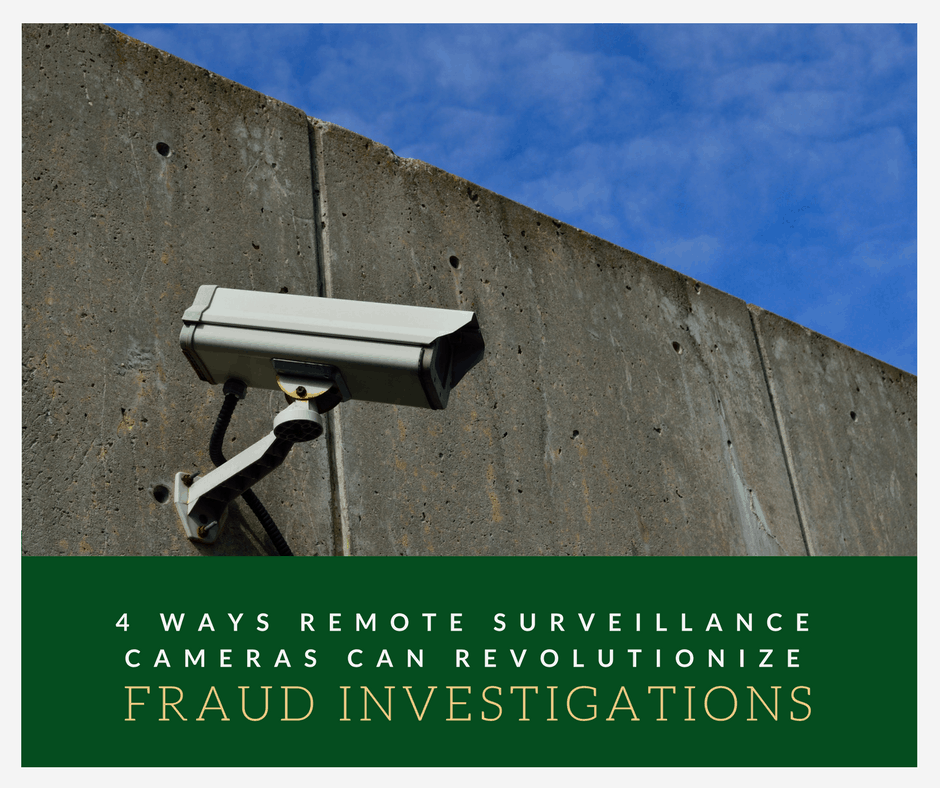4 Ways Remote Surveillance Cameras Can Revolutionize Your Fraud Investigations

With fraud costing insurers in the United States and Canada up to ten percent of total claim costs, it’s never been more critical to conduct excellent workers compensation investigations. Developing actionable intelligence that can be used to pursue a fraud finding isn’t always easy, however. Great investigators can be limited when it comes to visuals of claimants who are wise to the system. This is where remote surveillance cameras can make a big impact.
Remote surveillance can be achieved through a variety of technologies, but it’s important that investigators be familiar with the laws surrounding their use. Issues such as the reasonable expectation of privacy and chain of custody regulations must be carefully adhered to. Failure to do so can make or break a fraud case.
Read on for 4 ways in which remote surveillance cameras can revolutionize your fraud investigations.
- Cameras can surveil places investigators cannot.
Remote surveillance cameras have the unique benefit of being highly portable and extremely covert. Often less than one square inch in size, cameras can be placed in a variety of locations and almost certainly won’t be detected by a claimant. In this way, remote surveillance cameras can act as an extension of an investigator, offering round-the-clock surveillance in any legally appropriate location.
- Devices can record for a great deal of time.
Remote surveillance cameras have the ability to record for a long period of time without interruption. Though placement of the devices can be difficult when it comes to establishing proper sight lines, these cameras are great when your investigation calls for constant surveillance in one specific location. With ever-improving battery life and the ability to even monitor footage remotely, remote cameras can help investigators to strategize their surveillance or even capture incriminating footage on their own.
- Remote surveillance cameras provide excellent backup.
In the event of a technological issue while in the field, such as a dead battery or sensitive situation, an investigator might need to vacate a location at a time of claimant activity. If a remote surveillance camera is also in place in the location, these sorts of unfortunate but realistic occasional setbacks won’t necessarily mean your investigation loses out on valuable intelligence.
- Remote surveillance cameras record with great clarity.
Depending on the specific camera used and outside factors (such as placement or weather), the technology used in remote surveillance cameras is better than ever. Recordings are of excellent quality that is up-to-par with what would be needed in pursuing a fraud finding.
Remote surveillance cameras offer investigators a great tool to enhance their due diligence. Laws surrounding camera placement, privacy expectations, and usage of drone cameras are complicated, however. Remote surveillance should be used only within the bounds of full understanding of these and other laws.
Additionally, remote surveillance is limited. It should be viewed as a fantastic addition to traditional surveillance, rather than a replacement thereof. Want to learn more about considerations surrounding the use of remote surveillance cameras? Check out this whitepaper by Alliance Risk Group CEO Mario Pecoraro. It details 7 factors to consider before using remote surveillance in a claims investigation.
Still have questions? Contact Alliance Risk Group today to learn how thorough claims investigations can benefit your company. To submit an assignment, click here to complete our referral form.
